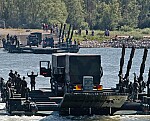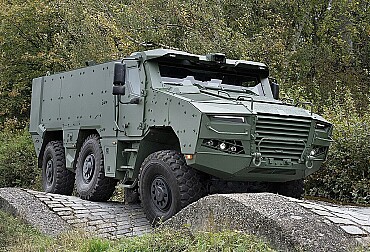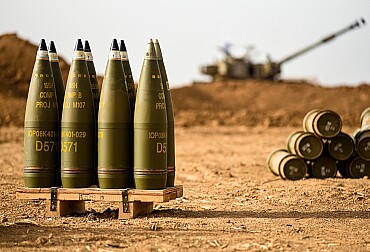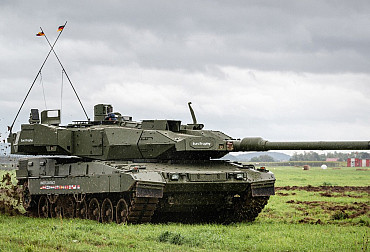What remains of Iran's nuclear programme and missile arsenal after Israeli and American strikes?
The ceasefire between Israel and Iran, and by extension the US, remains in place for now, and Iran in particular is beginning to assess the damage. Western allies claim that the strikes have completely crippled Iran's nuclear programme, which is disputed by some US media outlets citing security sources. Donald Trump, on the other hand, claims that the attacks on Iran were devastating. The Ayatollah regime, on the other hand, considers itself the winner of the latest round of the protracted conflict after firing nearly 600 missiles at Israel. According to reports, the damage and death toll are disproportionately higher on the Iranian side. How many guided missiles does Tehran have left, and how quickly is Iran producing them? And what is the actual extent of the damage to Iran's nuclear programme?
The recent escalation of the Middle East conflict, the most serious since the attack on Israel on 7 October 2023, has resulted in 12 days of Israeli-American-Iranian shelling and destruction on both sides. Iran reports far greater damage and loss of life – according to the Iranian Ministry of Health, 627 people were killed and more than 4,500 injured during the air strikes. An Iranian human rights organisation in exile reports as many as 300 more victims.
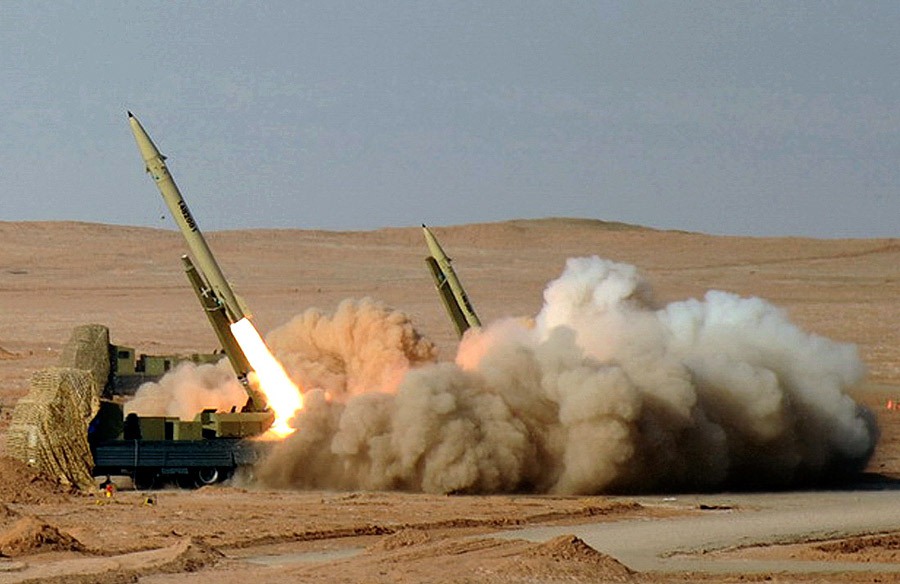
In contrast, the Israelis report 28 dead and 3,200 wounded. Among the Iranian victims are senior military commanders and leading nuclear scientists, including Revolutionary Guard Commander Hossein Salami, Chief of Staff Mohammad Bagheri, Revolutionary Guard ballistic programme chief Amir Ali Hajizadeh and scientist Mohammad Mehdi Tehrani. Hundreds of thousands of people have already bid farewell to the first 60 victims, including some family members killed during coordinated Israeli strikes in the first days of the war, during a state funeral in Tehran.
#BREAKING
— Tehran Times (@TehranTimes79) June 28, 2025
Thousands of Iranians accompany the coffin of Martyr Major General Mohammad Bagheri at Behesht-e Zahra Cemetery in Tehran ahead of his burial ceremony. pic.twitter.com/sp5SZwCzta
The main objective of Israel and then the United States was to cripple Iran's nuclear operations, which, according to Western governments, are not solely for civilian purposes, as claimed by the Iranians, but for the production of nuclear weapons. According to the US and the International Atomic Energy Agency, Iran was enriching uranium to the level required for an atomic bomb, with more than 400 kilograms of uranium enriched to 60 per cent in its possession before the attacks began. From this amount, it is technically relatively easy to produce uranium enriched to 90%, which is usable for the production of nuclear weapons.
"Satellite images show that all nuclear facilities in Iran have been monumentally damaged. The term “devastating” is accurate! The white structure in the picture is deeply embedded in the rock, even its ceiling is well below ground level and thus completely protected from flames. The most damage occurred deep below ground level. A direct hit," US President Donald Trump said on his social network Truth Social, referring to the damage to buildings at the Fordo facility.
More Maxar photos of the damage to the Fordow nuclear facility in Iran pic.twitter.com/RWLzRj6nit
— Hananya Naftali (@HananyaNaftali) June 22, 2025
"The devastating American attack on Fordo destroyed critical infrastructure at the site and rendered the enrichment facility inoperable. We believe that the US attacks on Iranian nuclear facilities, combined with Israeli attacks on other elements of Iran's military nuclear programme, have set back Iran's ability to develop nuclear weapons by many years," the Israeli Atomic Energy Commission commented on the latest wave of attacks before the ceasefire was announced, according to CNN.
However, according to some US media, there are now doubts about the actual crippling of Iran's nuclear industry. The Americans dropped GBU-57 MOP bombs, known as "bunker busters", from B-2 Spirit bombers on facilities in Fordo and Natanz. These bombs are capable of penetrating mountainous terrain and detonating deeper below the surface, which was supposed to cause extensive damage to both sites. However, according to people present at the briefing, the head of the US Joint Chiefs of Staff, Dan Caine, reportedly told senators that these bombs were not used at another location – Isfahan, where, according to US sources, approximately 60% of all Iranian enriched uranium is located. However, the facility is too deep and "bunker busters" would probably have been ineffective there.
This is a great explanation of what damage those bunker buster bombs truly did in Iran and how they work pic.twitter.com/DMARUHJ7qb
— Vince Langman (@LangmanVince) June 26, 2025
"The purpose of the mission was to eliminate certain specific aspects of their nuclear programme. Those were eliminated. Getting rid of nuclear material was not part of this mission," Republican Congressman Greg Murphy, who was also present at the classified hearing, told CNN. ‘We know the following: the (Iranian nuclear) programme was destroyed at these three locations. But they still have (nuclear) ambitions. I don't know where the 400 kilos of highly enriched uranium are, but it was not among the targets," Republican Senator Lindsey Graham of South Carolina said after the meeting.
Another question mark hangs over the remaining number of Iranian ballistic missiles. The Israelis claim that during the air strikes, they destroyed, among other things, several warehouses containing hundreds of these guided missiles and at least one production facility. To this must be added the approximately 600 missiles that the Iranians fired at Israel in 12 days. Some American sources estimated that Iran had about 2,000 such missiles before the latest conflict began, while other sources put the number at up to 5,000. American intelligence services previously claimed that Iran was producing about 50 per month. According to experts, facilities that manufacture rocket propellants for missiles, among other things, were also hit. The total restoration of pre-conflict missile production capacity could take years, according to estimates, but this does not mean that the Ayatollah regime has completely exhausted its capabilities, so it is not only the Israelis who remain on guard.
Iran partially changed its tactics during the conflict – unlike on the first day of the aggression in mid-June, when it launched 60 missiles in several waves, it later launched less intense waves of up to 20 missiles at a time, but at various more distant targets in Israel. Later, it also symbolically attacked a US base in Qatar. Most of the Iranian missiles were intercepted by air defences, whether Iron Dome, Patriot systems or American or Jordanian fighter jets, but a number of missiles landed on Israeli soil and killed people.
"If you target something in a populated area and miss the target by 300 metres, you're still going to hit something. You're still going to get spectacular footage," Fabian Hinz, a researcher at the International Institute for Strategic Studies, told The Times of Israel, referring to the recklessness with which the Iranians fired at civilian infrastructure far from military targets. A similar tactic, aimed at breaking the spirit of the population, is also being used in Ukraine by Iran's ally, Russia.
#Iran launched a missile strike on #Israel in response to the #USA overnight attack on nuclear facilities
— WBC Defenders (@WBCdefenders) June 22, 2025
Preliminary, the Ben Gurion airport, the biological research center, and command centers were hit.
Haifa and Tel Aviv were attacked by ballistics pic.twitter.com/pqIpeDmKo4
During the attack, Iran mainly used medium- and medium-range Ghadr and Emad missiles, which are modernised versions of the Shahab-3 missile based on the North Korean Nodong-1 missile. These missiles are not particularly sophisticated or accurate, but they are still highly lethal if they penetrate air defences. Each missile carries several hundred kilograms of explosives, so even a single missile that hits its target causes a large explosion and extensive damage up to several hundred metres away.
Initially, Islamists fired from western Iran, but in subsequent strikes they began to use launch sites hidden further inland and, in addition to solid-fuel missiles, they began to make greater use of more modern liquid-fuel missiles, which are more demanding in terms of logistics and operation. There has also been speculation about the use of the Fattáh-1 hypersonic weapon, which Iran has been developing in recent years and which is said to be capable of flying at speeds up to five times the speed of sound, i.e. Mach 5. However, according to analysts, it is questionable how many of these missiles Iran actually has and whether they are operational. Experts also point out that both Israel and the US have ways of neutralising even such advanced missiles.




